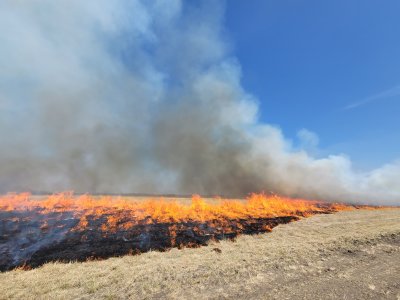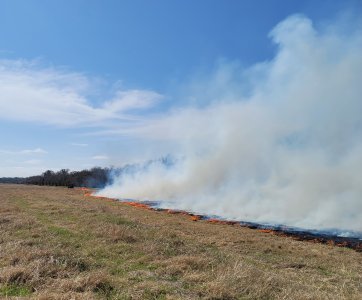The fact that you say 'apply what is recommended' implies that you intend to improve the soil to produce better hay. I'm going to change up the pitch here and ask, 'what is recommended' for the soil AND what is the pH? IF only the pH is screwed up (low) then you very well could get by with baleing and removing the offending broomsedge before ammending the soil with primarily lime. The soil MAY NOT need the added nutrients and removing the offending vegetation could be appropriate, especially if you intend to seed as all the 'bad hay' would impede seed to soil contact and prevent germination and establishment of seed applied. Burning the offending hay on site would be the best of both worlds as it would leave nutrients from the bad hay while eliminating its 'suffocating' (literally) presence. I would say don't cut it before burning. Fire will carry better through the standing hay rather than smolder through hay laying on the ground. But fire has an obvious element of risk. I just touched on the reason to leave the bad hay on site, and that is nutrient content. Especially if the soils are nutrient poor, and I don't mean low pH, leaving the bad hay on site for the nutrients it contains is highly preferable. Additionally, if nutrients are that low, I suspect the bad hay won't be 'too thick' to make improvements on the field through seeding and nutrient application impossible. Mowing to get existing hay as fine as possible will benefit and hasten breakdown. Also consider this, broomsedge grows with low phosphorous and potassium availability. So, broomsedge hay is NOT going to have the nutrient/fertilizer content of quality orchardgrass or fescue hay would. Consequently, removing broomsedge hay from a field is going to remove far less nutrients than removing better quality hay, so lower total loss of nutrients from the field soil when doing this.
1) Burn is preferable (but risk)
2) Bale and remove (benefits seed contact and germination but removes nutrients, but possibly a lower amt removed as hay is poor)
3) Cut and leave lay (leaves nutrients on field, but may/will hinder seeding if done, longer time to break down)
4) Cut/chop fine (leaves nutrients, faster breakdown than coarse cut, better seeding establishment than coarse cut and leave lay but not as good as bale/remove or burn) Chopping fine means multiple passes which means time an fuel and wear and tear which means $$.
I gave you 4 options. There may be more. Pros and cons to each. You get to choose what is right for YOU. (not right for me)
Sorry no simple answer.


